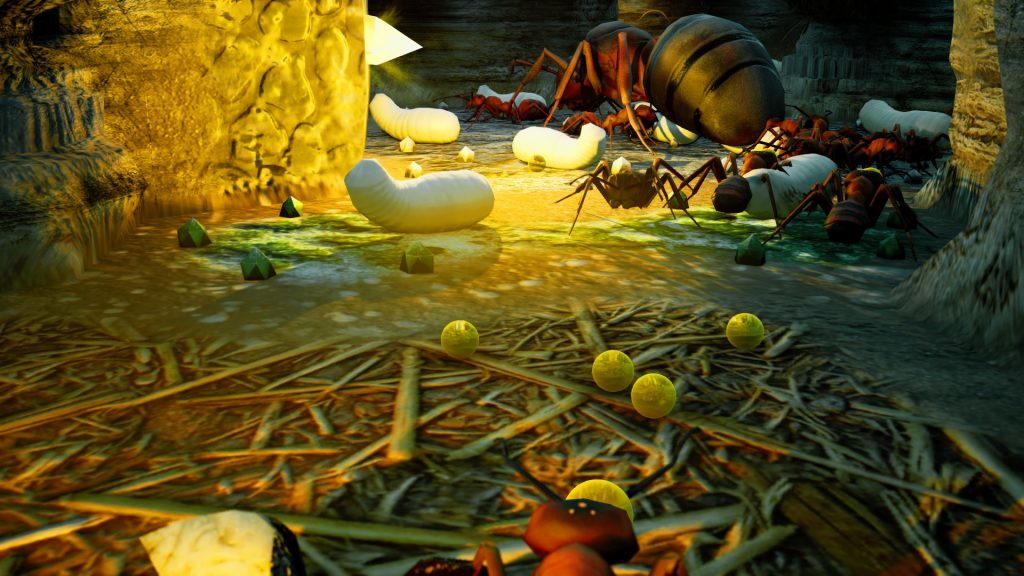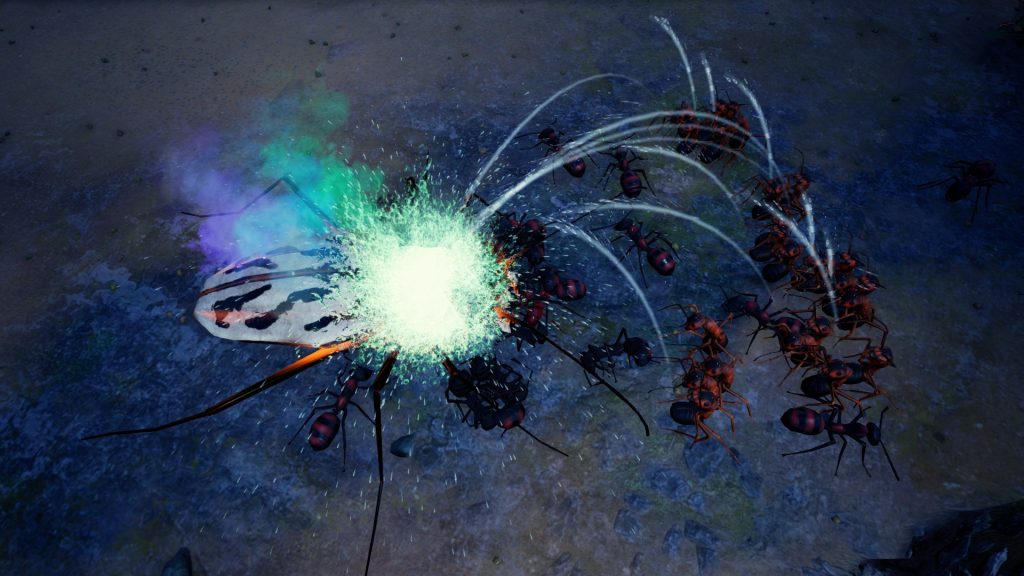We’re now much closer to our first major update, featuring leafcutters. As well as continuing development of the update to completion, we’ve been dealing with quite a lot of meta-requirement systems in the meantime, such as subtitles (which will be a long-overdue feature beginning with this update). Once we’re at a point where we can get meaningful feedback from our closed testing group, we will release it to them and that will soon give us a good idea of how long it will take to correct any detected issues. As always, our policy is to not give vague guesses on release timing, only solid dates once we’re certain of them – but we’re feeling good about the current pace of things and the rate at which the remaining task list is being ticked off.
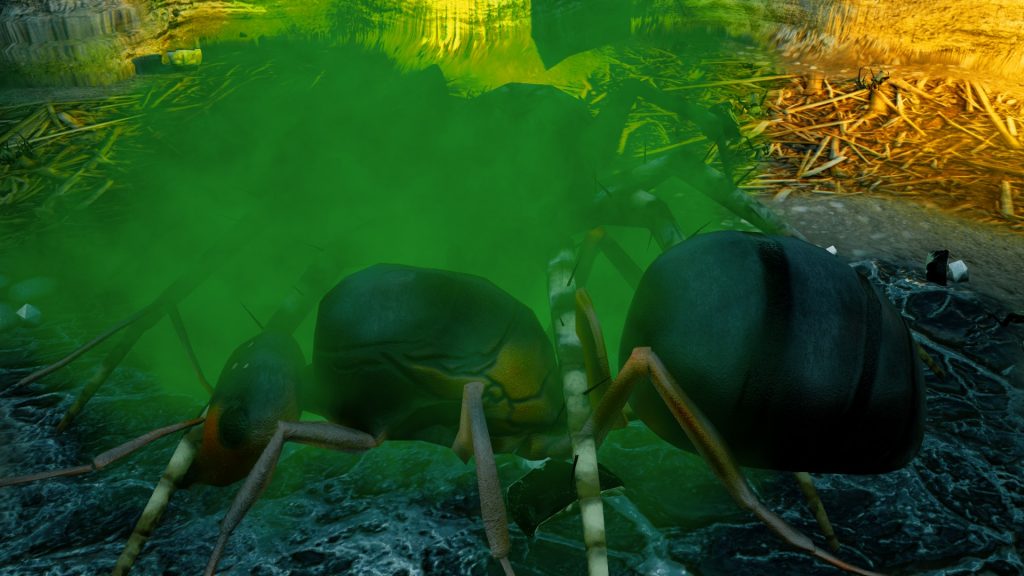
There’s been plenty of good visual things finalised and ready to show off over the past month – some of which show off some leafcutter mechanics. So let’s have a look at some of the fun things that await when you introduce Atta cephalotes to your Formica ereptor colony!
Floral Diversity
Rainforests are hugely diverse – they’re the most diverse land habitats on Earth; rich in speciation and sheer variety of solutions to evolutionary problems.
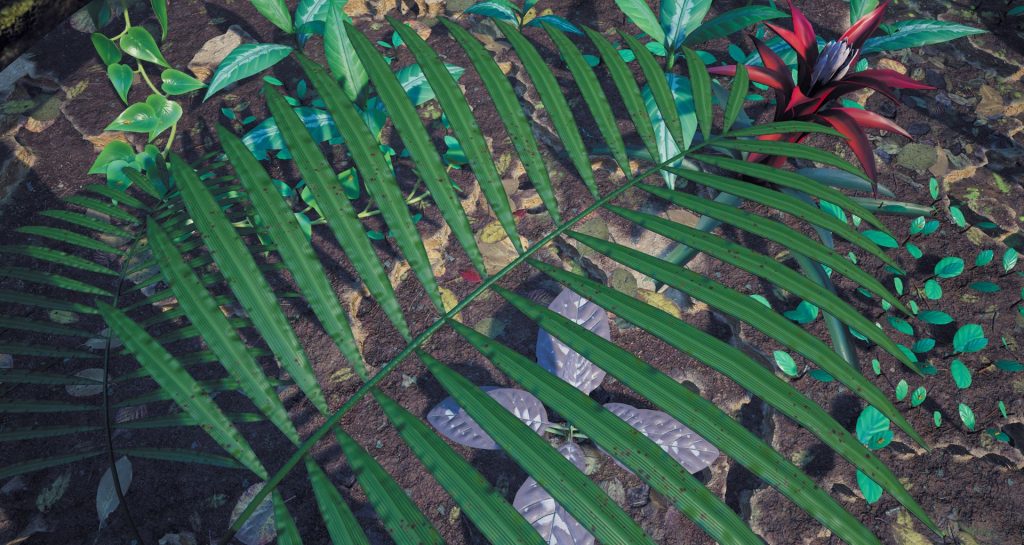
We’ve worked hard to make sure that’s reflected in the fauna, but just as importantly the flora of our Ecuadorian setting. Here’s a closer look showing some of the plant life in a recent art pass of level 3.1 – the first leafcutter level.
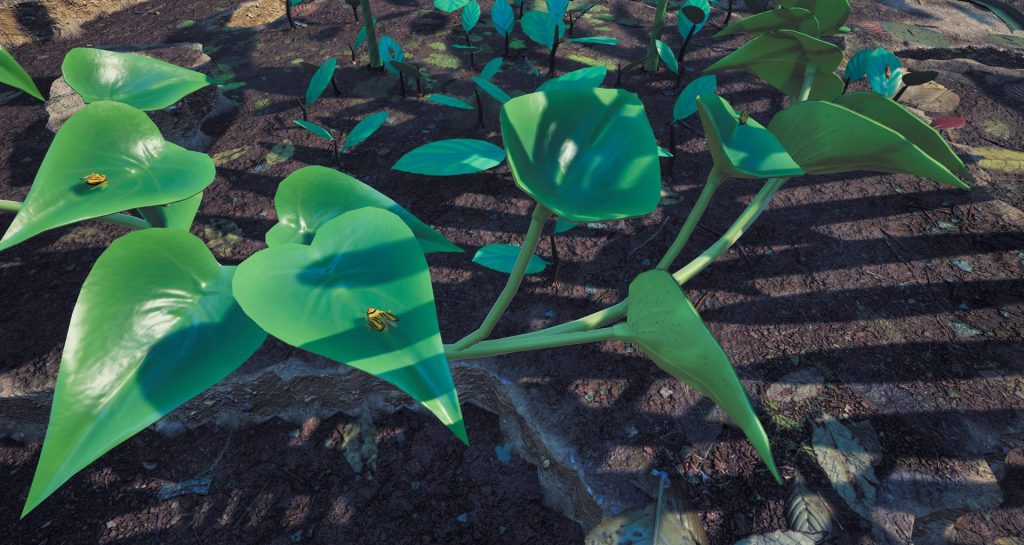
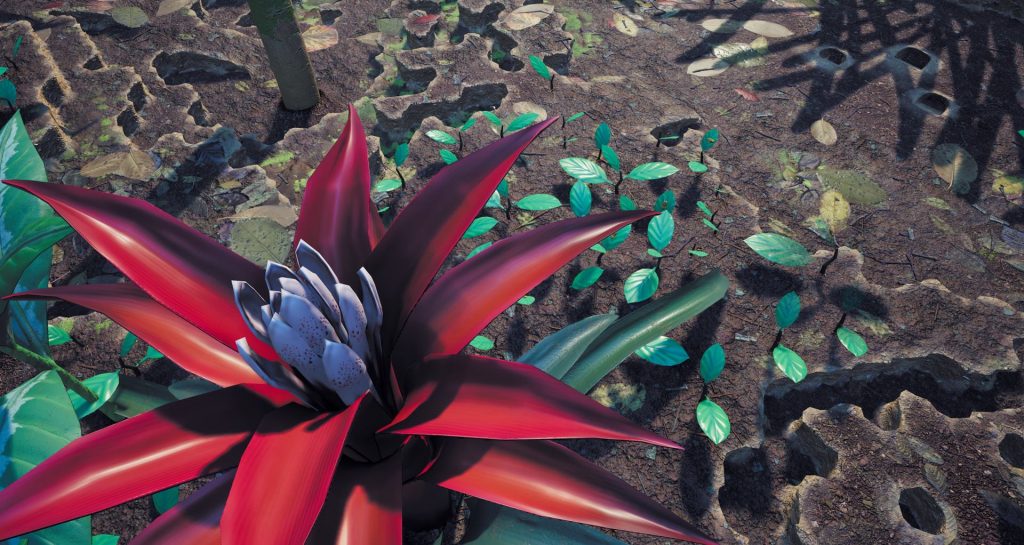
Fungus Production Pipeline
Leafcutters gain their nutrition from the fungus they grow in their gardens, sprouted from decomposing leaf cuttings harvested from the surface. The minors, mediae and majors collect cuttings and drop them off in designated chambers.
The minims (the smallest leafcutters) then take the leaves to the brood chambers where the fungus grows (this includes the queen tiles). The fungus will grow as leaves are added, then diminish as it is used up by new hatchings and tile placement – it then produces waste which must be managed. The short video below demonstrates this process.
The Harvest
Placing a pheromone trail marker near a plant will draw leafcutters assigned to it – they’ll see the plant as a harvestable food source, just like seeds or dead creatures in previous levels. The major, mediae and minor workers climb the stem, taking time to cut a chunk of leaf before taking it to a drop-off point in the nest. As detailed above, the minims will then take it to the fungus gardens.
The leaves will diminish visually as they are harvested by the leafcutters, giving a physical indication of when the resources are used up and new grazing pastures must be found.
Below is a rather pleasing close-up of this process happening.
Interface & Waste Management
This pair of pictures shows the near-completed interface modifications needed to bring leafcutters to the game. You’ll notice a new resource bar at the top of the screen. Green on the left represents fungus available to spend, grey is space available on the nursery tiles to grow fungus, and red on the right is used fungus that needs to be disposed of.
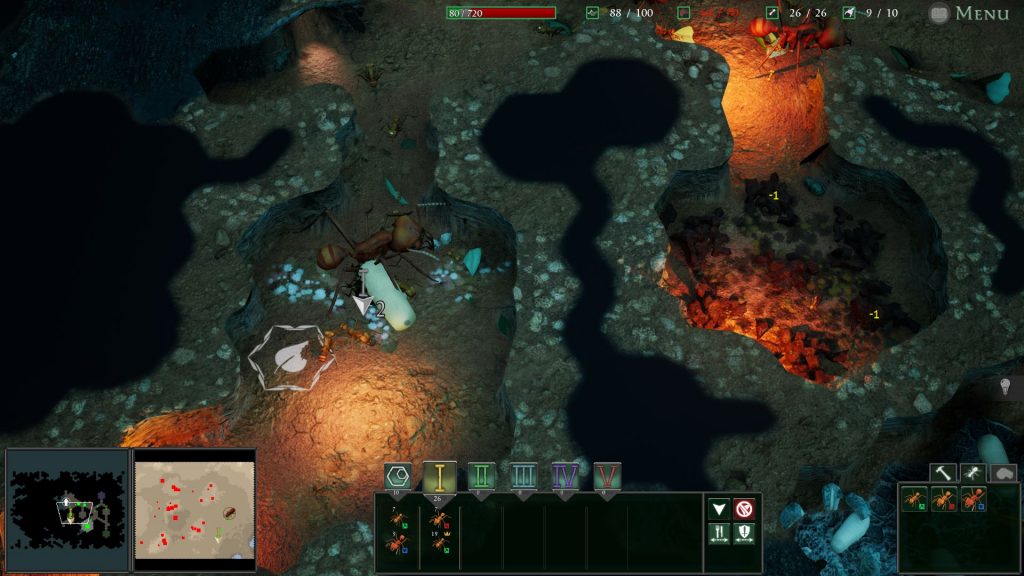
Over time, the fungus produces waste which must be removed and taken to special chambers (right of the first picture). The refuse chambers will have a detrimental effect on nearby brood chambers, so it’s wise to build them a good distance away from where your ants pupate and travel – non-minim ants walking through them will take a speed and attack de-buff as well as suffer damage for a time. This represents the disease that the real-life counterparts of our leafcutters aim to avoid by having dedicated refuse areas. Waste decays and disappears over time – faster for upgraded refuse tiles.
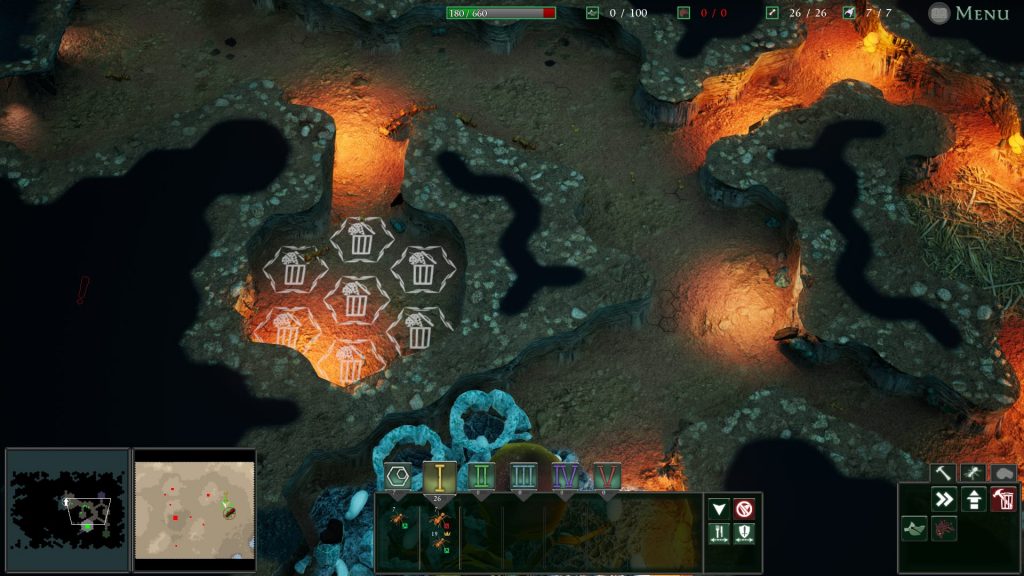
The New Formicarium
“Yes, yes, I know how to use a trowel!”
– Scientist #2
The colony’s current home is not suitable for the next set of tests. In order to continue the experiment, the scientists will need to relocate the queen to a new Formicarium. She and a few of her workers will be relocated into this new setting, which has a few… extra features.
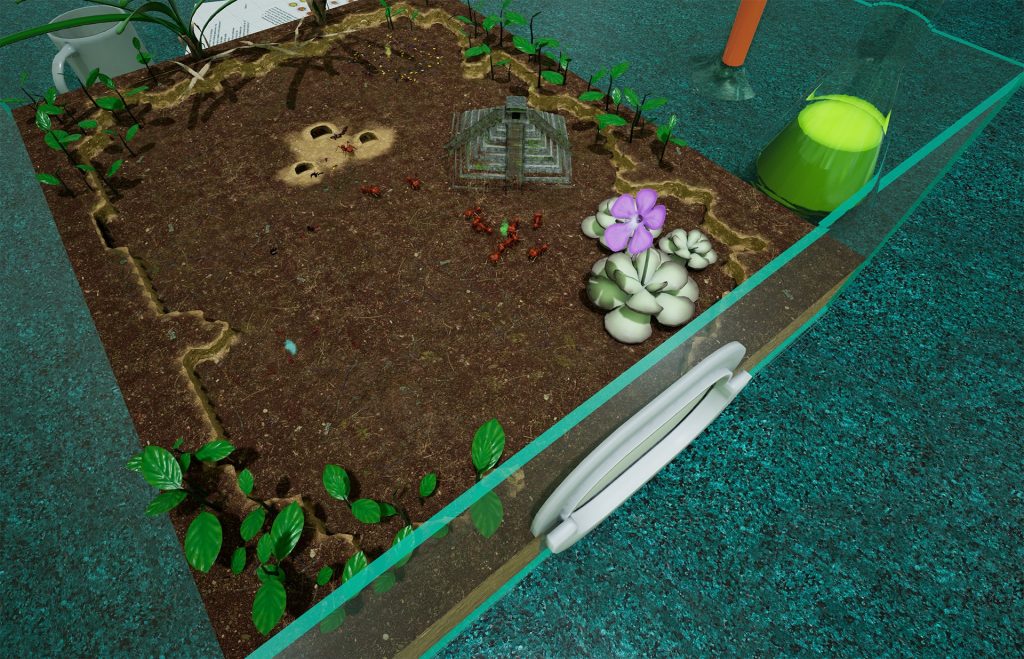
When this process happens, the colony will need to leave its food, construction and territory behind. However, it will be rewarded an amount of royal jelly for each territory point and item of food (spent or unspent). This can be spent on the new leafcutter majors or any upgrades and improvement the colony needs – this will help it get quickly back up to speed. All upgrade paths and minor improvements will also carry over.
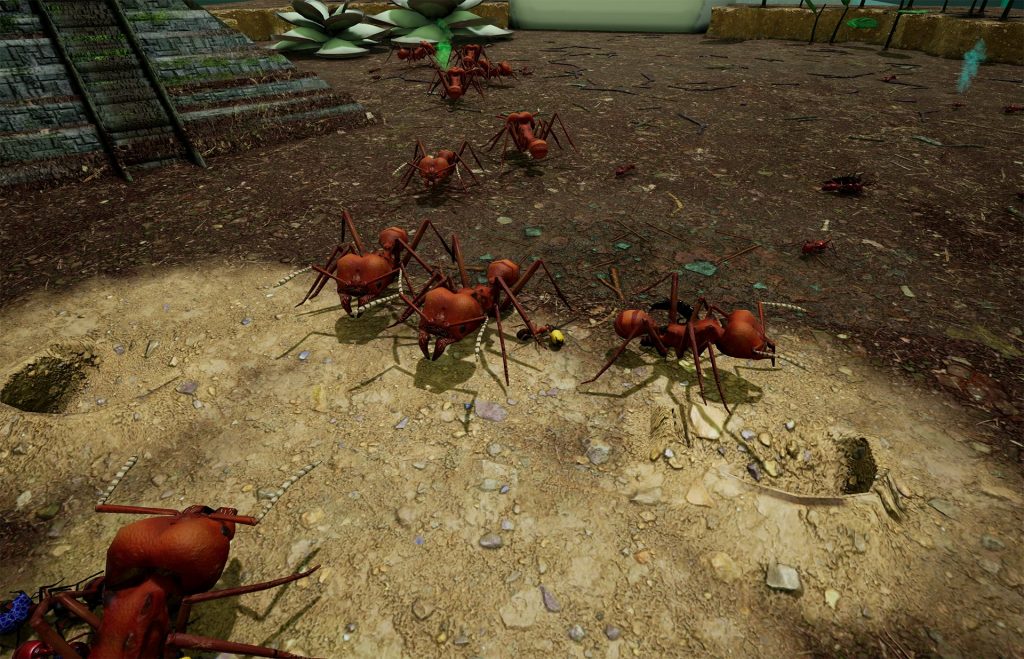
The change will happen just before you move on to tier 3 – in the level selection dialogue there will be a button which will unlock the 3rd tier levels.
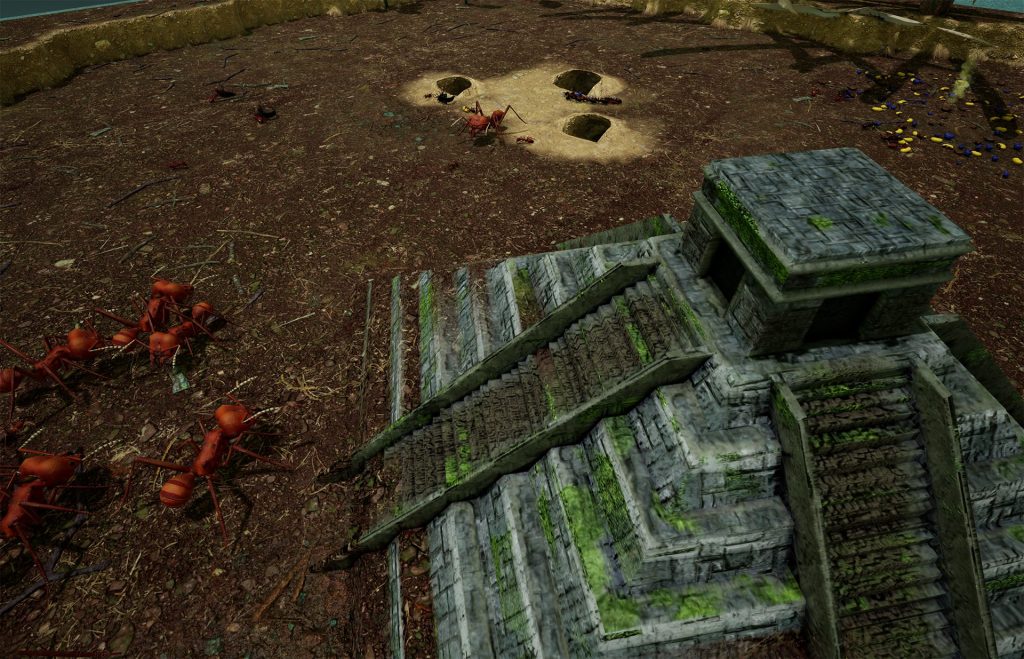
What Were We Up To In January?
Last month, John posted some select notes from the source control (update log) of Empires of the Undergrowth, to give a little insight into what each of our developers has been doing. He’s made another post along these lines in the meantime, and as before we think it’d be fun to go through some of these notes and give a little extra commentary to them. We encourage you to read John’s original thread, and indeed sign up for our official forums whilst you’re at it!
- Changed the way ramps work when the tide rises (ants no longer fall through) – this was the cause of a hardware-specific crash that had plagued us for quite some time. As it turned out, some ants when caught on ramps were falling through them to infinity – and in certain situations this caused a game crash on some systems. A tricky one to fix, but perseverance got us there! This has already been implemented in the current playable build of the game.
- Tweaked uber resistances – in certain situations and with certain colony setups, some uber creatures had become practically invulnerable. This was an oversight and not intentional – although uber creatures are still extremely tough and deliberately so, there should be fewer situations where they are unbeatable. There’s plenty more tweaking work to be done on freeplay, and indeed once the leafcutter update is done John will be focussing on another freeplay pass.
- Set tabbed minimaps to always have home nest on the left – the coming updates will enable multiple true colonies in a limited sense. To access their minimaps, there has been a new system made to keep them accessible as tabs behind the player’s own.
- Ants that enter an enemy colony are now tracked – similar to above, you’ll be invading some other nests if you dare.
- Subtitles for all levels added – a long-overdue feature and one important for accessibility (and localisation) but one which needs a lot of grunt work. We’re at a point now where we want this functionality to be there going forward – it’s important to the future of the game and our community as a whole.
- Tweaked the dissolve in various ways – this refers to the visual effect when a foreground object needs to be partially obscured by dithering so you can see through it. It’s particularly important for the Ecuador levels, which have a lot of low-growing foliage.
- Preparing in-game text for translation – localisation is important for the success of a game. We’re getting there.
Screenshot Central
Looking through the things you guys do with the simple tool of Photo Mode (F9 by default) or otherwise is always an excellent palate cleanser after writing one of these newsletters. It refreshes the soul. By default, F12 will take a screenshot in Steam. You can get it to us by simply uploading to Steam Community (a dialogue box allowing you to do this will pop up when you exit the game) or by manually emailing the screenshot to mike@slugdisco.com.
